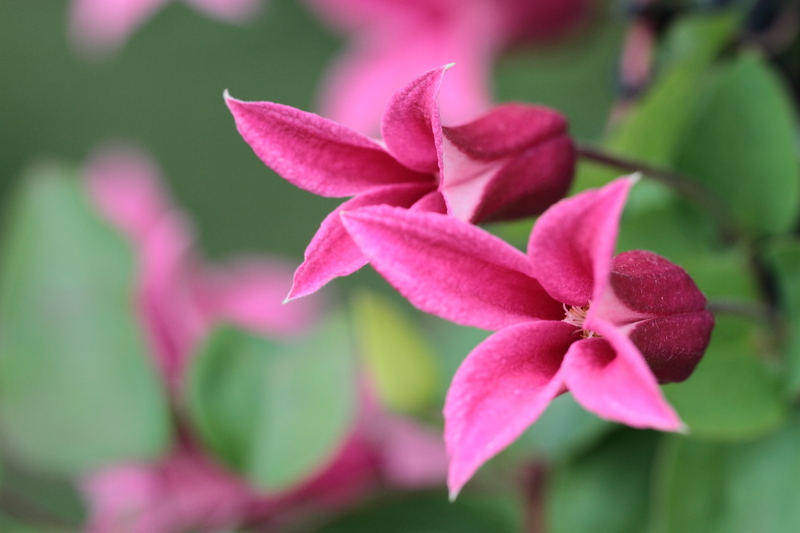Seasonal Advice for Minimizing Summer Drought Damage to Your Grass
Each summer, lawns face the harsh challenge of scorching heat and insufficient rainfall. Without the right management strategies, summer drought damage to your grass can quickly turn lush green carpets into brown, brittle patches. Fortunately, with a proactive and knowledgeable approach, you can safeguard your lawn against the worst effects of seasonal dryness. This comprehensive guide outlines expert tips, proven seasonal advice, and effective lawn care routines to keep your grass resilient, green, and thriving--even through the hottest days of summer.
Understanding the Impact of Summer Drought on Your Lawn
Drought is one of the most significant stress factors for grass, especially during prolonged periods of high temperatures and limited precipitation. Drought stress can cause grass blades to wilt, lose color, and eventually enter dormancy. If the drought is severe or prolonged, permanent damage to the root system may occur, making recovery difficult or sometimes impossible.
Key Symptoms of Drought-Stressed Grass
- Grass turns bluish-gray or straw-colored
- Footprints remain visible after walking on the lawn
- Slow or halted grass growth
- Soil feels hard and dry
Being able to promptly identify these signs of drought damage in grass allows homeowners to take immediate action and minimize lasting harm.

Pre-Summer Preparations: Building Drought-Resilient Lawns
The best way to minimize summer drought damage to grass starts with solid preparations in late spring. Develop your lawn's drought resistance before the hottest months arrive by taking these steps:
Soil Preparation and Improvement
- Aerate the Lawn: Aerating loosens compacted soil, improves root growth, and increases water penetration. Perform aeration in the late spring for cool-season grasses and late spring or early summer for warm-season varieties.
- Topdress with Compost: Spreading a thin layer of organic compost over your lawn improves soil texture, enhances moisture retention, and supplies vital nutrients.
Select Drought-Tolerant Grass Varieties
- Zoysia Grass: Known for its drought and heat tolerance
- Bermuda Grass: Performs exceptionally well in hot, dry climates
- Tall Fescue: Deep root system offers resilience to water scarcity
- Buffalo Grass: Native to prairie regions and requires minimal irrigation
If you're seeding or laying new sod, opt for these drought-resistant grasses to minimize future summer damage.
Apply the Right Fertilizer
- Choose slow-release fertilizers with a balanced nutrient profile tailored to your grass type.
- Avoid high-nitrogen fertilizers in late spring, as they can stimulate excessive growth that demands more water during summer drought.
Watering Strategies to Minimize Drought Damage in Summer
Due to water restrictions and the need for conservation, wisely managing irrigation is crucial to preventing lawn drought damage during summer. Effective watering habits don't just hydrate grass--they encourage deep, robust roots that withstand dry periods better.
Smart Watering Techniques
- Water Deeply and Infrequently: Soak the soil to a depth of 6-8 inches per session. Deep watering encourages roots to seek moisture and increases tolerance to drought.
- Water Early in the Morning: This reduces evaporation and gives grass time to absorb water before peak heat.
- Use a Rain Gauge: Track the total weekly rainfall and supplement irrigation only if less than 1 inch is received.
- Avoid Watering at Night: Night watering can promote fungal issues, especially during humid summer months.
Signs of Overwatering and Underwatering
- Overwatering: Mushy, discolored grass, and increased weed/fungal growth.
- Underwatering: Wilting, browning, and persistent footprints remain after walking on the lawn.
Mowing Practices to Protect Your Grass from Drought Damage
Proper mowing plays an often-overlooked but critical role in drought preparedness. The correct mowing strategy leaves grass better equipped to conserve moisture, shade roots, and recover from drought stress.
Essential Mowing Tips:
- Keep Blades Sharp: Dull mower blades tear grass tips, increasing water loss and susceptibility to drought injury.
- Set Mower Height Higher: Cut grass no shorter than 2.5 to 4 inches, depending on variety. Taller grass shades soil, preserves moisture, and develops deeper roots.
- Follow the "One-Third Rule": Never remove more than one-third of the grass blade in a single mowing. This prevents stress and shock to the plant.
- Leave Grass Clippings: Mulched clippings return nutrients and help insulate the soil from drying sun.
Summer Lawn Maintenance for Drought Resilience
Beyond watering and mowing, adapt your summer lawn maintenance to protect grass from drought damage. Here are key seasonal tips:
Minimize Lawn Foot Traffic
- Limit play, pet activities, or equipment on grass during dry spells--traffic compresses soil and damages weakened grass.
Weed Management
- Weeds compete for limited water and nutrients. Regularly remove or spot-treat weeds to relieve pressure on your drought-stressed grass.
Apply Mulch in Strategic Areas
- Use organic mulch around trees, beds, and borders to conserve soil moisture and reduce temperature extremes.
Monitor and Adjust for Environmental Conditions
Every season is different, and flexibility is key to successful summer lawn care. Keep an eye on weather forecasts, local water restrictions, and adjust your care routines as needed:
- Reduce Watering During Rainy Weeks: Overwatering can be as damaging as drought stress.
- Pause Fertilizing During Acute Drought: Fertilizers can burn grass if insufficient moisture is available for absorption.
- Reseed Bare Spots in Early Autumn: Once the worst summer heat passes, fill in damaged patches for next year's lawn health.
Choosing Lawn Products to Reduce Summer Drought Damage
Your choice of products can make a significant difference in your lawn's drought recovery and resilience. Choose wisely:
- Wetting Agents (Soil Surfactants): Apply these to help soil absorb and retain water more efficiently.
- Biostimulants and Soil Conditioners: Improve root vigor, stress tolerance, and moisture use by adding natural extracts, amino acids, or humic substances.
- Drought-Tolerant Grass Seed Mixes: If overseeding, use specialty blends developed for arid and hot climates.
- Organic Mulches and Compost: Increase your soil's water-holding capacity over time.
Long-Term Preventative Measures for Healthy Lawns Year-Round
The best defense against unpredictable summer droughts is a healthy, vigorous lawn all year. Invest in long-term measures that pay off season after season:
- Annual Soil Testing to monitor pH and nutrient levels.
- Routine Core Aeration to prevent compaction and encourage deep rooting.
- Regular Overseeding with improved drought-tolerant varieties to ensure dense grass cover.
- Integrated Pest Management (IPM): Monitor for insect or disease pressure, which increases when grass is weakened by drought.
Landscaping Alternatives for Extreme Drought Regions
- Xeriscaping: Replace high-maintenance turf with native, drought-friendly plants and decorative rocks to reduce water needs.
- Hydrozoning: Group areas of similar water requirements to optimize irrigation and minimize water waste.

Frequently Asked Questions About Minimizing Summer Drought Damage to Grass
How often should I water my lawn during a drought?
Water once or twice weekly, applying enough to moisten soil to a depth of 6-8 inches. Always adjust based on rainfall and grass type.
Should I fertilize my lawn in the middle of a summer drought?
Avoid fertilizing during severe drought; wait until rainfall is sufficient or weather cools. Fertilizer can burn grass lacking moisture and delay recovery.
Can I let my grass go dormant in the summer?
Yes, grasses (especially cool-season types) can safely go dormant during drought, turning brown temporarily. Maintain minimal irrigation (about 1/4 inch every three weeks) to keep the grass crown alive until conditions improve.
How can I tell if my grass will recover after drought?
Check for green shoots at the base and flexible crowns. Brittle, gray-brown grass without green tissue indicates more serious, possibly permanent damage.
Final Seasonal Advice: Safeguard Your Lawn from Summer Drought
Protecting your grass from summer drought damage hinges on preparation, proper maintenance, and smart response to seasonal conditions. By aerating, choosing the right grass species, maintaining proper mowing heights, and following water-wise irrigation routines, you'll preserve your lawn's appearance and health--even in the face of severe heat and water shortages.
Remember: Resilient lawns are built year-round. Adopt these best practices long before summer arrives for proven results in minimizing drought harm. Pay attention to your grass's needs, stay informed about local climate trends, and you'll enjoy a beautiful, drought-resistant lawn every summer.
For more in-depth lawn care resources, seasonal advice, and product recommendations customized to your region, consider reaching out to turf professionals or local agricultural extension offices. Investing in your lawn's health today ensures a vibrant, green oasis--even through the toughest summer droughts.